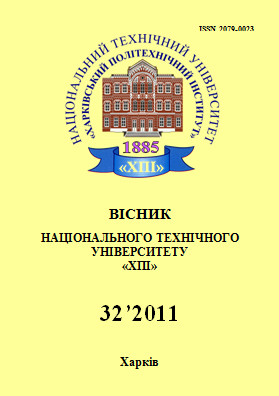Численный анализ структурных свойств хаотических временных рядов
DOI:
https://doi.org/10.20998/%25xAbstract
При анализе хаотических временных рядов возникает проблема выявления и анализа их структурных свойств. Для решения задачи численного анализа структурных свойств исследуемых временных рядов применен метод Херста и метод сингулярного структурного анализа.References
Калуш Ю. А. Показатель Херста и его скрытые свойства / Ю. А. Калуш, В. М. Логинов // Сибирский журнал индустриальной математики – 2002. Том V, № 4 (12). − С. 29–37.
Короленко П. В. Новационные методы анализа стохастических процессов и структур в оптике. Фрактальные и мультифрактальные методы, вейвлет-преобразования. / П. В. Коро-ленко, М. С. Маганова, А. В. Меснянкин // Уч. пос. – М. : Московский государственный университет им. М. В. Ломоносова, Научно-исследовательский институт ядерной физики им. Д. В. Скобельцына, 2004. – С. 28–30.
Н. Э. Голяндина. «Метод «Гусеница» - SSA: анализ временных рядов» / Уч. пос. – СПб. : Изд-во СПбГУ, 2004. – 76 с.
Downloads
Published
How to Cite
Issue
Section
License
Copyright (c) 2016 Вісник Національного технічного університету «ХПІ». Серія: Системний аналiз, управління та iнформацiйнi технологiїAuthors who publish with this journal agree to the following terms:
- Authors retain copyright and grant the journal right of first publication with the work simultaneously licensed under a Creative Commons Attribution License that allows others to share the work with an acknowledgement of the work's authorship and initial publication in this journal.
- Authors are able to enter into separate, additional contractual arrangements for the non-exclusive distribution of the journal's published version of the work (e.g., post it to an institutional repository or publish it in a book), with an acknowledgement of its initial publication in this journal.
- Authors are permitted and encouraged to post their work online (e.g., in institutional repositories or on their website) prior to and during the submission process, as it can lead to productive exchanges, as well as earlier and greater citation of published work (See The Effect of Open Access).


